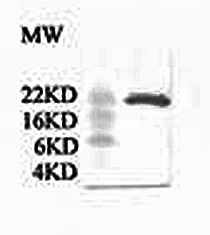C Reactive Protein antibody [CRP-8]
GTX13426
ApplicationsDot Blot, Western Blot, ELISA
Product group Antibodies
TargetCRP
Overview
- SupplierGeneTex
- Product NameC Reactive Protein antibody [CRP-8]
- Delivery Days Customer7
- Application Supplier NoteWB: 1:200. ELISA: 1:40,000. *Optimal dilutions/concentrations should be determined by the researcher.Not tested in other applications.
- ApplicationsDot Blot, Western Blot, ELISA
- CertificationResearch Use Only
- ClonalityMonoclonal
- Clone IDCRP-8
- ConjugateUnconjugated
- Gene ID1401
- Target nameCRP
- Target descriptionC-reactive protein
- Target synonymsPTX1, C-reactive protein, C-reactive protein, pentraxin-related, pentraxin 1
- HostMouse
- IsotypeIgG1
- Protein IDP02741
- Protein NameC-reactive protein
- Scientific DescriptionC Reactive Protein is a major acute phase reactant synthesized primarily in the liver hepatocytes. It is a pentraxin (cyclic pentameric protein) compound of five identical nonglycosylated subunits of 206 amino acids each (m.w. 24 kDa), that are bound noncovalently to form the physiologic CRP molecule (m.w. 117.5 kDa). C Reactive Protein mediates activities associated with preimmune nonspecific host resistance. It is opsonic, an initiator of the classical complement cascade and an activator of monocytes/macrophages. CRP also binds to several nuclear components including chromatin, histones and snRNP, suggesting that it may play a role as a scavenger during cell necrosis. Studies have revealed that among other markers of inflammation, CRP shows the strongest association with cardiovascular events. Many clinical studies demonstrated that coronary mortality among patients with unstable angina and elevated CRP is significantly higher comparing with the patients without elevated CRP. Measurements of C-reactive protein (hsCRP) in the patients with ischemic heart disease provide a novel method for detecting individuals at high risk of plaque rapture.
- Storage Instruction-20°C or -80°C,2°C to 8°C
- UNSPSC12352203



